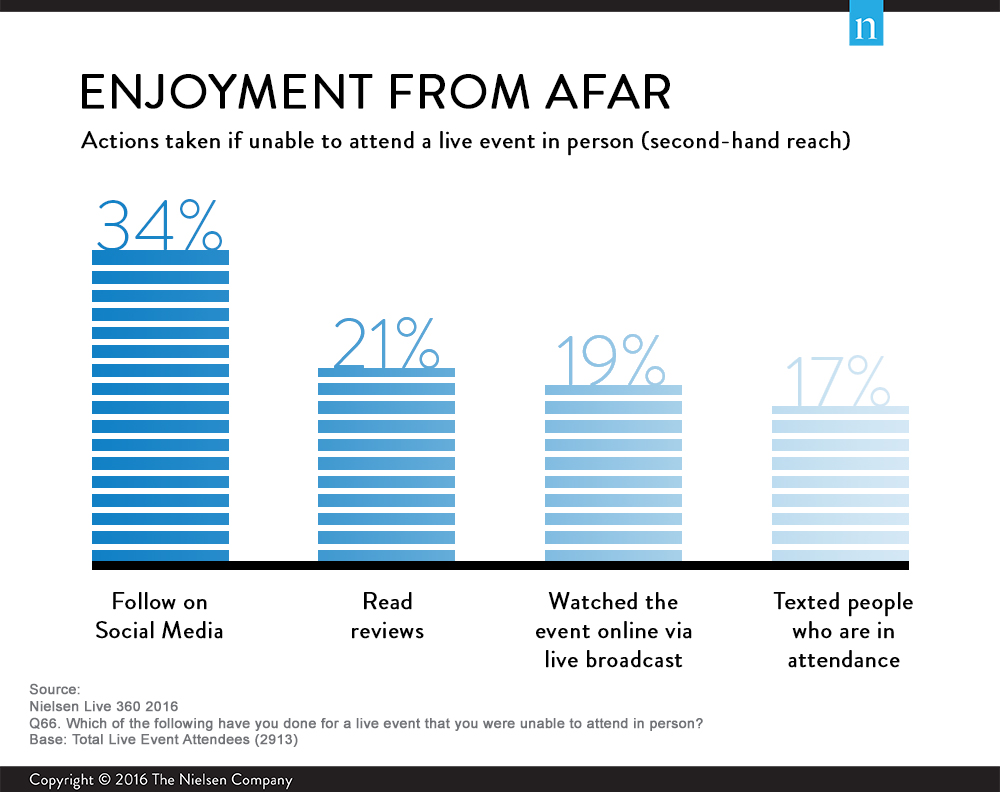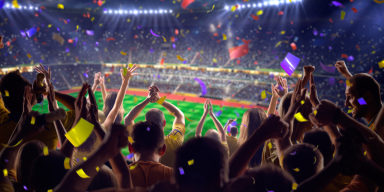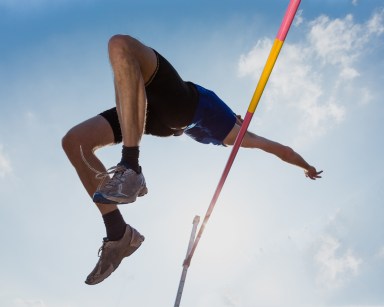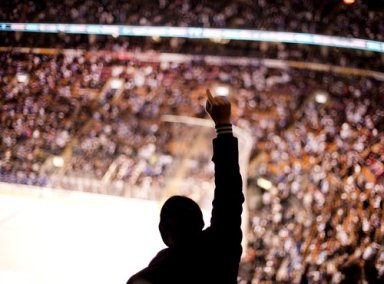It’s common knowledge that emerging technology has transformed almost every aspect of music—from the devices themselves to how fans connect with it. But as this transformation continues, a counter-intuitive trend has emerged: The live event, a decidedly traditional format, is re-gaining importance.
For the music industry, the renewed focus on live events stems largely from the gap between digital consumption and revenue: U.S. consumers are increasingly turning to online streaming services and video platforms to listen. In fact, U.S. adults 18+ who have gone to at least one concert/festival in the past year (live music attendees) spend 60% of their average annual music spend on live events. Comparatively, they spend 12% of their spend on satellite radio and streaming subscriptions and 12% on CDs/vinyl. This group’s spending focus has opened new opportunities for concert/festival ticket sales, merchandising and brand partnerships.The foundation of live events’ commercial appeal lies in their ability to bring together audiences for long periods, as well as in consumers’ willingness to pay more money to attend. Notably, live attendees spend about an average of three hours at a live music concert or an outdoor community event.Where consumers first become aware of upcoming shows varies significantly by the type of event. According to the Nielsen Music 360 report, radio and word of mouth are the biggest drivers of music festival awareness. Understanding how fans first hear about an event, and where they’re going to learn more, is important for brands looking to maximize their media impact of sponsorships at these events.Not surprisingly, music type plays a key role in consumers’ purchase decisions: 79% of music attendees say that genre is an important factor when it comes to choosing which live music events to attend.Once consumers become interested in events, many dive in quickly: Nearly one-in-three live music concert attendees buy tickets during the pre-sale period.The large base of dedicated concertgoers, plus additional consumers who are aware of shows but don’t attend, has put live music events squarely in the mainstream. Some 60% of live event attendees in the U.S. are aware of Lollapalooza, 53% are aware of the iHeartRadio Music Festival, and 46% are aware of Coachella.So, how can brands make the most of this awareness and popularity? What are the best ways to optimize concert sponsorships?Nielsen research highlights the importance of not taking a one-size-fits-all approach, primarily because attendees and event structure varies significantly and fans are generally more receptive to custom brand experiences. For example, it’s not enough for sponsors to merely put up signage at a concert. In fact, 15% of music attendees say they would view a brand less favorably if it put its logo on a main stage area.To connect effectively, sponsors need to understand the demands and affinities of particular music event audiences. Rather than broad branding, live music attendees want tailored activations, gifts and experiences from companies. For example, 69% of Millennial music event attendees and 79% of Hispanic music event attendees say they would view a concert sponsor more favorably if it handed out branded merchandise.Beyond offering gifts and experiences during the event, sponsors and content creators have a wider opportunity to engage fans throughout the entire live music lifecycle. For example, 63% of Millennial music attendees say they would view a brand more favorably if it offered free downloads of newly released singles.While the in-person experience is what fundamentally differentiates live music, digital platforms still play a vital role in building enthusiasm and magnifying impact. For example, 34% of live attendees who are unable to attend live events say they follow along on social media, 21% say they read reviews afterwards and 17% text people who are in attendance. In addition, 29% of live music attendees say they check artists’ websites and social media accounts after events.

Ultimately, layering digital offerings such as free downloads, fresh social updates and rich websites onto live music events maximizes the impact of sponsorships before and after the actual event. By combining the old and the new, it’s possible for brands to reap the benefits of both.
Methodology
This article was derived from the insights in the Nielsen Live Event 360 report. The report dives into the live event experience in the U.S.: who is attending what and why, what consumers are purchasing while they attend and how brands can engage most effectively before, during and after an event. Data for this study was collected Sept. 2 to Sept. 19, 2016, among 3,212 consumers ages 18+. Surveys were conducted online using the Harris Interactive Sample and an external panel for Hispanic over-sample.



